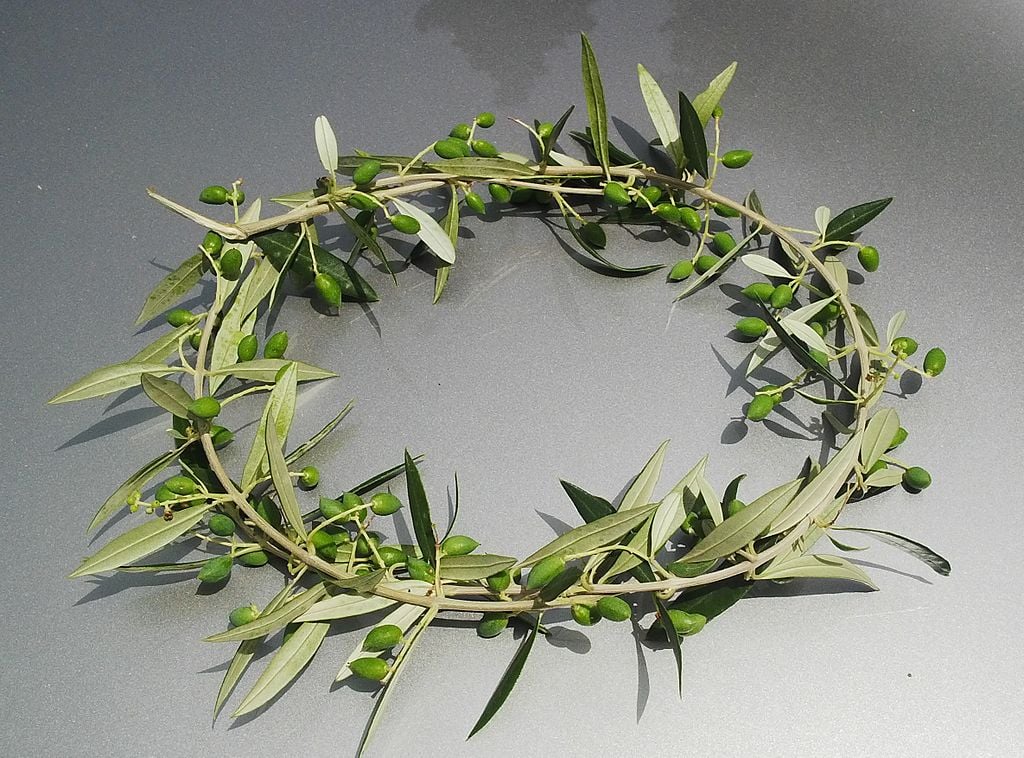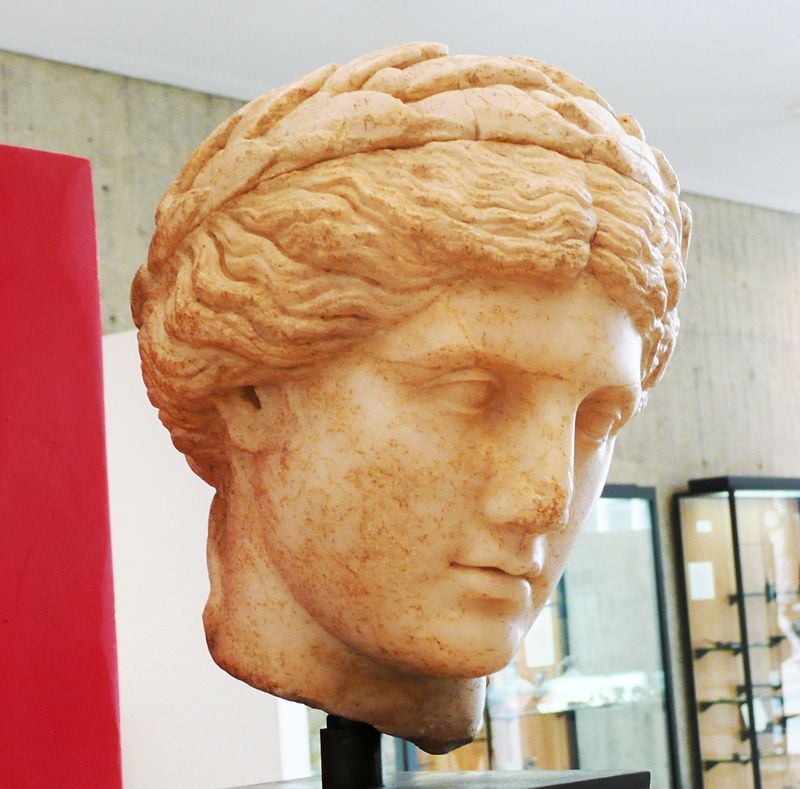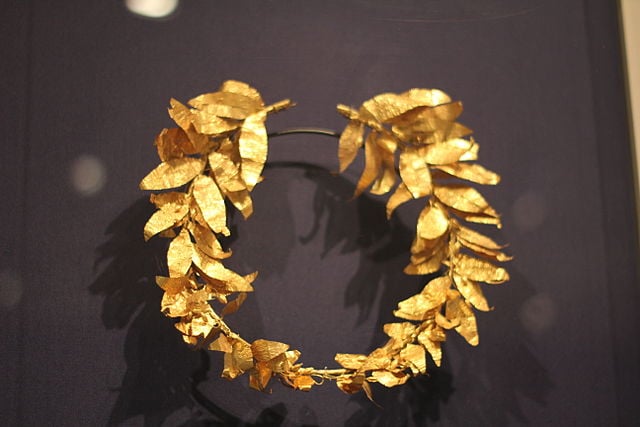
Wreaths, now commonly used as home decorations, bohemian headpieces, or even Snapchat filters have their origins in ancient Greece and have had a symbolic meaning in Western culture for over two thousand years.
Since antiquity, the circular or horseshoe shaped wreath made of leaves and flowers and usually worn around the head, symbolized glory, power, and immortality.
Wreaths were ancient symbols of victory and accomplishment
In ancient Greece, wreaths were first used as a reward for victory in athletic competitions, military endeavors, and musical contests.
For instance, winners of the Olympic Games, which were first held in 776 B.C. and occurred every four years, were awarded a wreath made of olive leaves. These wreaths, known as kotinos, were said to be made of olive leaves gathered from the sacred wild olive tree in Olympia.

Similarly, during the Pythian Games, winners received a wreath of bay laurel. The Pythian Games were held at Delphi every four years in honor of the god Apollo. The bay laurel tree stood as an important symbol of victory, accomplishment, and status.
In addition, for the Nemean Games, the prize was a wreath of celery while the Isthmian Games featured a wreath of pine leaves. Both wreaths symbolized the achievement and status of the winner.
Moreover, ancient gods and goddesses were often depicted in art and literature wearing wreaths made of specific plants, which held a symbolic meaning. For example, the nymph Daphne in Ovid’s Metamorphoses manages to escape the attentions of the god Apollo by turning herself into a laurel tree. Apollo promised to honor her by cutting off a branch from the tree exclaiming: “Although you cannot be my wife, you shall at least be my tree; I shall always wear you on my hair, on my quiver, O Laurel” (557-559). As a result, Apollo is often depicted in art and literature wearing a laurel wreath. From then on, the laurel became a symbol of poets, music, and achievement, which continues to this day.

The symbol of the laurel wreath, for instance, was also featured on the medal design for the 2016 Rio Olympics.
The olive and oak were symbols of Zeus, as the oak represented wisdom. Celery is sacred to both Zeus and Poseidon and is often associated with death; the deceased were often crowned with wreaths of celery. Myrtle was sacred to Aphrodite; hence, it was worn in weddings and funerals while ivy and grapes were associated with Dionysus. Thus, these were worn during festivities dedicated to him.
Wreaths were not only popular in athletic or poetic competitions. They were also worn during festivities. At aristocratic dinner parties known as symposia, wreaths were thought to help relieve drunkenness. These wreaths were made of wool and later decorated with flowers and petals from roses, violets, myrtle, and parsley. Wreaths also made an appearance in weddings, funerals, dances, and religious sacrifices.
Greek gold wreaths
Wreaths saw an increase in popularity during the Hellenistic Period (323-331 BC). During that period, wreaths were made of delicate gold sheets which were cut and woven onto a gold frame. Made to resemble their natural counterparts of the classical period, these wreaths were too fragile to wear. Hence, they were usually worn during rare or special occasions.
Consequently, the wreaths of that period were usually exclusive to the aristocracy. Egyptian-born Greek writer Athenaus of Nitocris wrote that during luxurious dinner parties in Alexandria, Egypt guests wore gold wreaths around their heads.

These gold wreaths were also placed in the tombs of important figures, such as Philip II of Macedon. They symbolized not only the victory but also the immortality of the deceased.
Ancient Greek wreaths in later periods
In ancient Rome, the tradition of the wreath as a reward for triumph or achievement continued. Romans dressed their leaders and military personnel in crowns made of laurel, oak, or myrtle. The so-called grass crown, or corona obsidionalis, was the highest military honor awarded by a besieged army to the general who liberated them. The grass crown was made of grass, weeds, and wildflowers symbolically gathered on the spot where the army was attacked.
As Christianity spread, the use of the wreath slowly disappeared, as it was associated with pagan festivals. However, circular wreaths or rings were incorporated in Christian and Orthodox religion to symbolize eternal life. Hence, many saints are depicted in religious art with rings called ‘stephana’ in Greek.
During the Renaissance period (14th – 17th century), the wreaths saw a comeback as artists looked back to antiquity for inspiration.
Today, wreaths continue to be used in various contexts. Whether they are used to decorate someone’s home for Christmas or in digital filters on Snapchat or other popular social media platforms, wreaths continue to prove human’s ongoing connection with the past.
See all the latest news from Greece and the world at Greekreporter.com. Contact our newsroom to report an update or send your story, photos and videos. Follow GR on Google News and subscribe here to our daily email!



